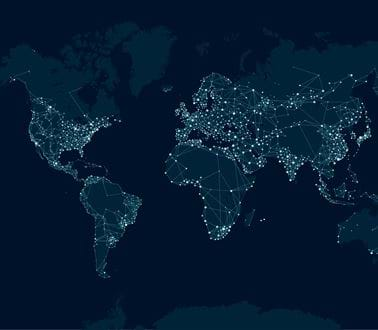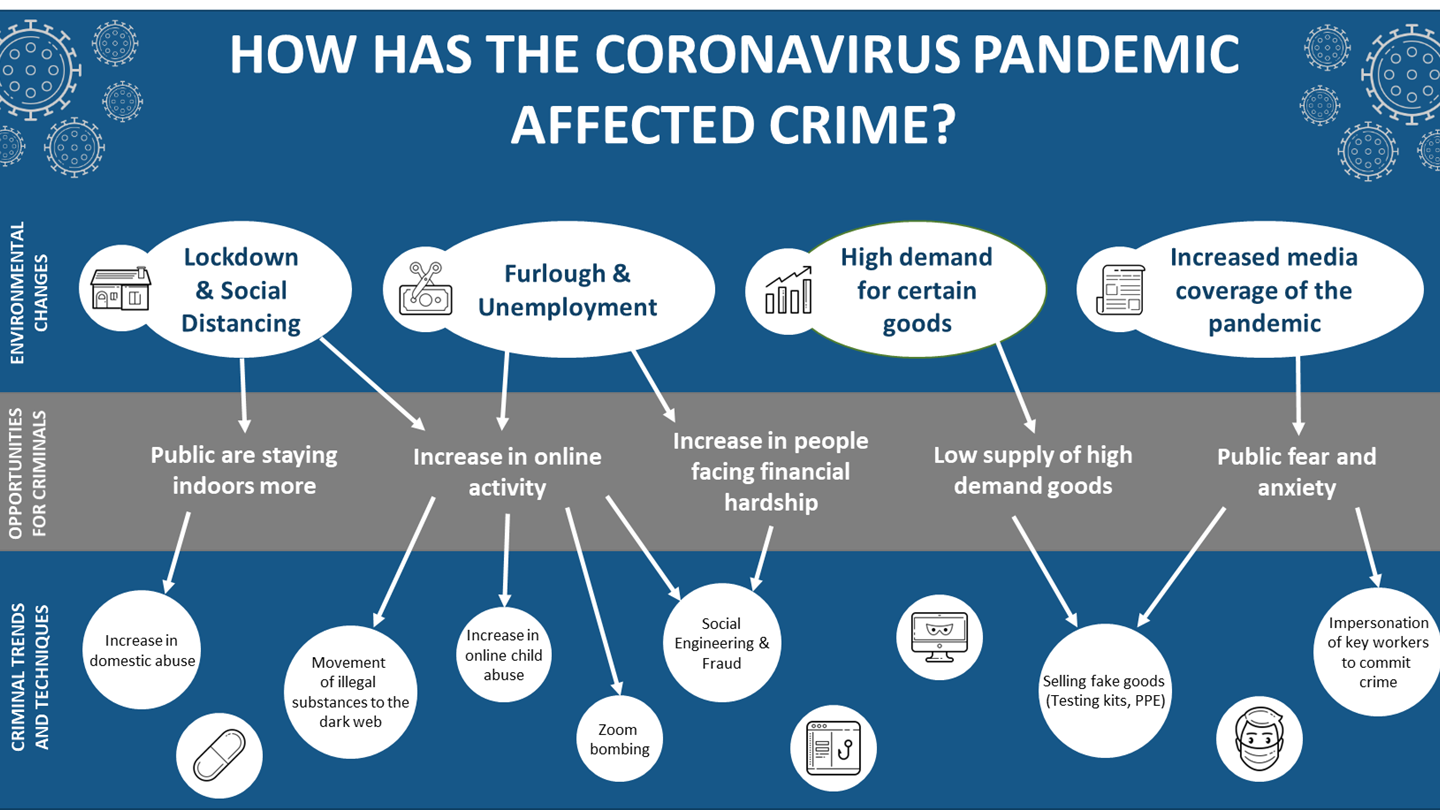
Crime and COVID-19
The coronavirus pandemic has, and is continuing to, affect the whole world with over 18 million cases recorded in over 200 countries. The UK is no exception, with control measures such as social distancing and ‘lockdown’ being implemented. As a result of these new measures, various aspects of society have been affected, including crime. There have been some positive impacts - for example, newspapers have suggested that since the pandemic, crime has dropped by as much as 20% in some areas of the UK.
However, there have always - as is the case with any crisis - been those looking to exploit the situation and the vulnerable, with cases of cybercrime, domestic violence, fraud and counterfeiting having risen significantly (Source: Europol: Pandemic Profiteering Report).
What might all this mean for the future of crime? Has the nature of crime fundamentally changed as a result of the coronavirus pandemic and how will it continue to change as lockdown measures are eased?
At the peak of the pandemic
Whilst the population is facing a significant threat to life, criminals are seeing this as a new opportunity. Quickly adapting to a massive shift in societal habits and the new environment we find ourselves living in, they are finding ever more sophisticated ways to exploit the anxieties, demands and societal structures caused by the pandemic.
The following image outlines some of the criminal trends and techniques which have been exacerbated as a result of the global pandemic.
Icons used by icons8.com

Looking forward
As pandemic measures begin to relax, crime will continue to evolve and adapt. Disrupted crimes will begin to kick-off again, such as the illegal movement of people and drugs across borders, burglaries, and drink-driving offences. However, it is likely that some trends will continue. Law Enforcement are having to deal with a new landscape and new priorities, allowing cybercriminals specifically to exploit this and the populations increase in online activity.
Long-term changes are likely to fall out of our current climate, like more remote working and a subsequent increase in the use of online chat and video calling applications. Therefore, a higher prevalence of cybercrime is likely to remain in the future.
Trends that may get worse
Easing restrictions could also see some crime trends worsen. This is likely to be the case for many trends. Let's explore three possible outcomes through a behavioural science lens:
1. An increase in anti-social behaviour
The pandemic measures have led to boredom and a loss of freedom in a considerable amount of the population. As lockdown persisted over 4 months, frustration stemming from this grew and could, in some cases, develop into aggression (frustration-aggression theory) and hence anti-social behaviour. It is possible this is already one of the contributing factors to the spike in domestic violence, so there is no reason why this will not have broader reaching consequences as we integrate back into ‘normal’ day-to-day living.
For example, as many public spaces are now open again, some may get more angry than usual with people who are not social distancing, following official guidelines, or wearing their masks in specified areas. Additionally, pubs and restaurants are open which means alcohol consumption across the UK is likely to rise. Drinking can result in more severe responses to frustration, and therefore could also lead to an increase in anti-social behaviour.
2. An increase in racially-driven hate crimes
In previous epidemics like SARS in 2003, a surge in racially-driven hate crimes occurred. Newspapers are already reporting increases in hate crimes directed at the Asian community. As lockdown eases, this may increase as people begin to socially interact again and pandemic-related frustrations intensify.
Pandemics, and crises in general, lead some to look for scapegoats in terms of people, places or institutions to blame. In some instances, this could result in the Asian community being stereotyped and falling victim of xenophobic sentiment. Stereotyping in this case falls down to the out-group homogeneity bias. It is the perception that members of an ‘out-group’ are more similar to each other, whereas members of an ‘in-group’ are diverse and individualistic. Grouping an ‘out-group’ community together encourages stereotyping, and when coupled with frustration or a need to attribute blame, could lead to racially-driven hate crimes.
3. An increase in street crimes in ‘staycation’ hot spots
As we embark in to the summer season, the UK population are beginning to flood to the coasts and the big cities for a break due to the current international travel restrictions. Criminals, in particular those driven by financial issues, may resort to petty street crimes (e.g. pickpocketing) and target these larger crowds for ‘quick wins’. Tourism spots often fall victim to high levels of street crime for a few reasons, some being:
- Tourists are “strangers” to the new area they are in and are therefore more vulnerable
- More people at a given location equates to more opportunities for criminals
- As tourists are generally in “holiday mode” and are more relaxed, their attention is often diverted away from security issues/measures
Closing thoughts
As the pandemic evolves, criminals will continue to seek new opportunities to exploit and will adopt the relevant tradecraft to do so. However, we can also expect some current crime trends to develop and worsen as tensions continue to run high.
Law Enforcement have responded quickly to the changing nature of the pandemic and the shifts in criminal behaviour. The use of data-driven insight combined with a human science perspective will help them to prioritise resources at a challenging time.
Check out what Roke does in the Information Assurance and Human Sciences space here.
Related news, insights and innovations
Find out more about our cutting-edge expertise.




























